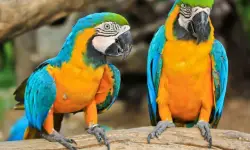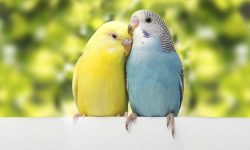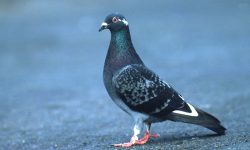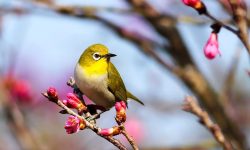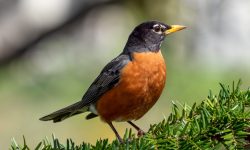In the heart of Michigan’s wetlands, one bird stands out from the reeds with a crown of gold and a call like no other. The Yellow-headed Blackbird (Xanthocephalus xanthocephalus) is a bold, unmistakable member of the blackbird family that brings color, sound, and striking contrast to the region’s freshwater marshes. With its bright yellow head and chest set against sleek black plumage, this bird looks as if it’s wearing a royal golden scarf. Though less common than its red-winged cousin, it’s a species that captivates birders and nature lovers alike.
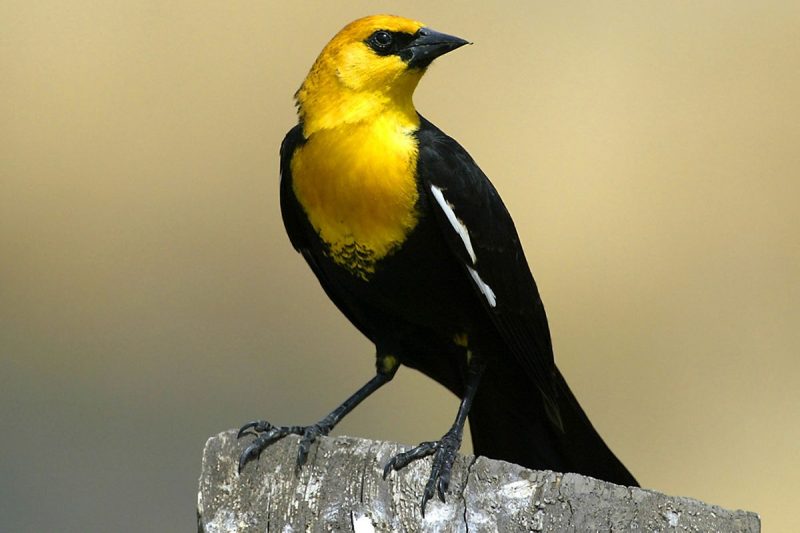
Where to Find the Yellow-headed Blackbird in Michigan
Yellow-headed Blackbirds are not evenly distributed across the state. They primarily breed in the Upper Peninsula and the northern portions of the Lower Peninsula, where large, open marshes provide the perfect nesting grounds. These birds prefer freshwater wetlands rich in cattails and emergent vegetation, especially those that offer shallow standing water and thick plant cover.
Their nesting habitat overlaps with Red-winged Blackbirds, but Yellow-headed males tend to be more dominant and often claim prime nesting spots. Birders seeking them out in Michigan should visit places like Seney National Wildlife Refuge, Shiawassee National Wildlife Refuge, or quiet northern marshlands in late spring and early summer. Early mornings are best, when their calls echo across the wetland.
A Closer Look: Appearance and Identification
Male Yellow-headed Blackbirds are among the most visually dramatic songbirds in North America. They have glossy black bodies with a brilliant yellow head and breast. A small white patch on the wings becomes visible in flight, adding to their flair. Females, while less vibrant, still carry the yellow coloration on a more subdued brownish background. Juveniles resemble females but are more uniformly brown with faint hints of yellow.
This strong contrast between black and yellow makes males especially easy to spot during the breeding season. Perched atop cattails or reeds, they sing with chest puffed out and head lifted high, putting their brilliant crown on full display.
The Sound of the Marsh: Their Distinctive Calls
What truly sets the Yellow-headed Blackbird apart, beyond its plumage, is its voice. Their song is a mechanical-sounding, raspy buzz—often compared to a rusty gate hinge or the whine of a distant machine. It’s a sound you’re unlikely to forget, and one that immediately tells you you’re in the presence of something special.
Unlike the more melodious calls of other marsh birds, this harsh, grating song plays a key role in territory defense and attracting mates. Males will sing persistently from exposed perches, both to warn off rivals and advertise their availability to females.
Nesting Behavior and Breeding Ecology
Yellow-headed Blackbirds are colonial nesters, meaning many individuals breed close together within the same wetland patch. Males defend small territories and may mate with multiple females, but they rarely assist with nest building or chick-rearing. The female constructs a nest deep among the cattails, weaving it tightly to the stems just above the waterline.
Nests are usually anchored to living plants, making them vulnerable to fluctuating water levels. The female lays 3 to 5 eggs and incubates them alone. Once hatched, the young are fed a protein-rich diet of insects and aquatic invertebrates until they fledge.
Interestingly, Yellow-headed Blackbirds tend to nest later in the season than Red-winged Blackbirds. This is thought to be a strategy to avoid early-season flooding and maximize food availability for their young.
Seasonal Movements and Migration
In Michigan, Yellow-headed Blackbirds are migratory, arriving from their wintering grounds in the southwestern United States and Mexico in late April or early May. They stay throughout the summer and depart by August or early September. Outside of the breeding season, they gather in large flocks, often mixing with other blackbird species during migration.
Their migratory flocks can be enormous, sometimes numbering in the thousands, moving across open country and stopping to feed in agricultural fields. During migration, their bright yellow heads are less visible in large groups, but their calls often give them away.
Diet and Feeding Habits
Yellow-headed Blackbirds are omnivores, feeding on a mix of plant and animal matter depending on the season. During the breeding season, they consume mostly insects—dragonflies, beetles, caterpillars, and aquatic larvae—which they gather from reeds and shallow water.
Outside the breeding period, their diet shifts toward seeds and grains, particularly from cultivated crops. They often forage on the ground or wade through wet areas in search of food. Their strong, pointed bill helps them pry seeds from grasses or catch small invertebrates.
Conservation Status and Challenges
While the Yellow-headed Blackbird is not considered globally threatened, its populations are locally sensitive and tied closely to the health of wetland habitats. Loss of marshland due to drainage, development, and agriculture poses a threat to breeding colonies. In addition, water level changes—whether due to drought, flooding, or human alteration—can destroy nests and reduce breeding success.
Michigan’s northern wetlands remain an important part of this species’ eastern breeding range. Continued wetland conservation efforts, especially in the face of climate change, will be key to ensuring that the Yellow-headed Blackbird retains a foothold in the state.
Why This Bird Captivates Birdwatchers
The Yellow-headed Blackbird’s rare blend of visual drama, unusual voice, and selective habitat makes it a favorite target for birders. Seeing one feels like a reward—both for patience and for finding the right place. Unlike the more abundant Red-winged Blackbird, which may sing from any roadside ditch, the yellow-headed counterpart tends to reveal itself only in wild, open, and relatively undisturbed marshes.
For beginner birders, it’s a great species to search for once you’re ready to go beyond the backyard and explore richer habitats. For seasoned naturalists, it’s a symbol of Michigan’s quiet, intact wetland ecosystems—an indicator of both biodiversity and balance.
Conclusion
With its bold colors, buzzing call, and preference for expansive marshes, the Yellow-headed Blackbird is a striking ambassador of Michigan’s northern wetlands. Though not the most common blackbird in the state, it is undoubtedly one of the most memorable. Watching one call from a sunlit cattail is a quintessential moment in any Great Lakes birding journey.
As wetlands face growing environmental pressures, this golden-crowned blackbird reminds us of what’s at stake—and what we stand to lose without careful stewardship. Protecting its home ensures that future generations can hear its strange song and see its yellow blaze lighting up the reeds.

